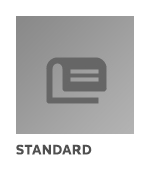
ASTM F2166 PDF
Original price was: $51.60.$31.00Current price is: $31.00.
Standard Practices for Monitoring Non-Contact Dielectric Characterization Systems Through Use of Special Reference Wafers (Withdrawn 2003)
| Published by | Publication Date | Number of Pages |
| ASTM | 01/10/2002 | 7 |
ASTM F2166 – Standard Practices for Monitoring Non-Contact Dielectric Characterization Systems Through Use of Special Reference Wafers (Withdrawn 2003)
This standard was transferred to SEMI (www.semi.org) May 2003
1.1 These practices describe the use of wafers with special electrical and physical characteristics for controlling and monitoring performance of non-contact dielectric characterization systems (NCDCS) that employ corona. Thermally oxidized wafers are not sufficient for this purpose because of parametric drift due to temperature-bias stressing and exposure to the atmosphere. Three methods are described to cover various experimental arrangements (see for a discussion on the two different types of corona).
1.1.1 Method A – For systems that employ point source corona,
1.1.2 Method B – For systems that employ line source corona and can be programmed to obtain a full set of parameters, and
1.1.3Method C – For systems that employ line source corona but can only determine mobile ion density.
1.2 Special reference wafers are used to determine selected performance of these dielectric characterization systems, including initial surface voltage (Vsurf or Vcpd), flatband voltage ( Vfb), effective charge (Qeff), density of interface traps (Dit), mobile charge (Qm), and electrical dielectric thickness (Tox).
1.3 The results obtained by these measurements can also be used to expose problems with wafer handling and software algorithms.
1.4 The procedures in this practice can be used to ascertain that the dielectric characterization system(s) meet quality control requirements such as those in an ISO 9000 quality program.
1.5 This standard does not purport to address all of the safety concerns, if any, associated with its use. It is the responsibility of the user of this standard to establish appropriate safety and health practices and determine the applicability of regulatory limitations prior to use.
Product Details
- Published:
- 01/10/2002
- Number of Pages:
- 7
- File Size:
- 0 files
- Note:
- This product is unavailable in Russia, Ukraine, Belarus




